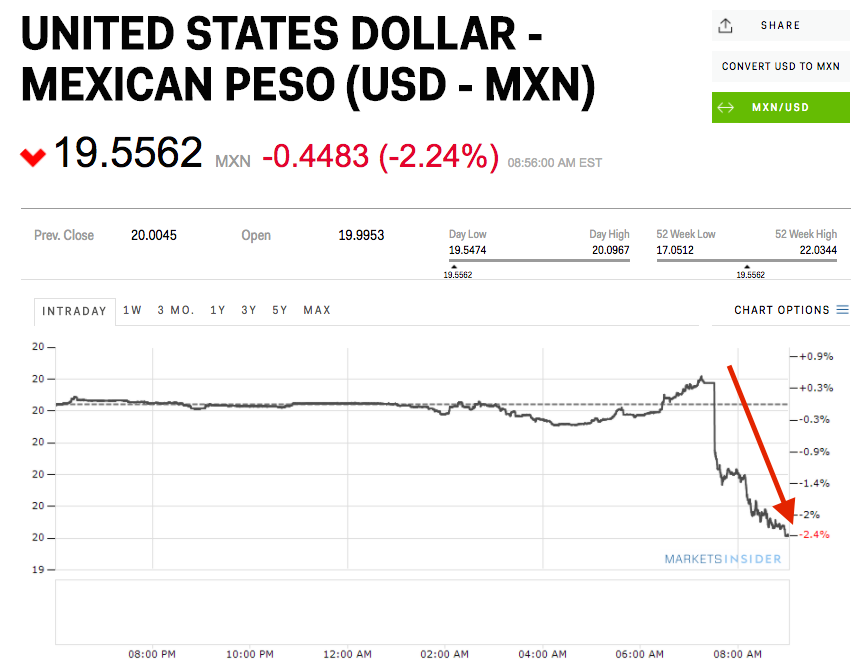The Mexican peso jumped after US Commerce Secretary Wilbur Ross argued in an interview that the currency would recover should the US and Mexico manage to renegotiate a good trade deal.
The currency is up by 2.2% at 19.5562 per dollar around 9:11 a.m. ET.
“The peso has fallen a lot mainly because of the fear of what will happen with [the North American Free Trade Agreement]. I believe that if we and the Mexicans make a very sensible trade agreement, the Mexican peso will recover quite a lot,” he told CNBC on Friday.
Moreover, in response to question regarding which “most egregious aspects of the NAFTA accord” he wants to look at as a first priority when discussing a new deal with Mexico, he said one thing he wants to focus on is currency.
“I think partly the decline in the peso was due to worry about renegotiation of NAFTA, but I think we also need to think about some other mechanisms for making the peso/dollar exchange rate a bit more stable,” he told CNBC.
He futher explained in greater detail later on in the interview:
"Well, at the end of the day, currency is much more in the province of the Department of Treasury and the Federal Reserve Bank than it is of Commerce. But think back to when there was a big Mexican crisis. Bob Rueben was then the Treasury Secretary. He put in place some lines of credit running back and forth between the central banks to give them the mechanism for dealing with it. So there are mechanisms, whether it's that one or something else, that could be used as a part of an overall package to try to stabilize things.
There are lots of problems with the weak peso for Mexico. We talked about the way it helps in terms of their manufacturing competitiveness. But Mexican imports an awful lot of its food. In fact, I believe they're the biggest importer of corn from the United States. So a weak peso hurts the average Mexican and certainly hurts the poor Mexican to a very, very substantial degree because most food products are ultimately dollar denominated."
Of course, it's worth noting that a weaker peso relative to the dollar comes with negative side-effects for US companies that have heavy exposure to Mexico.
Effectively, when the greenback strengthens against the peso (or the peso weakens against the dollar), then goods and services in the US become more expensive for Mexicans. Therefore, they might end up buying less of those American-made goods and services going forward, which is bad for American producers.
"With regards to Mexico specifically, Mr. Ross took an especially conciliatory line," Neil Shearing, chief emerging markest economist at Capital Economics, wrote in commentary after the interview. "A more stable (and stronger) peso is of course in the interests of the Trump administration as the more the currency weakens, the cheaper Mexico's exports become."
"And it may be the case that the 6% drop in the currency against the dollar since the US election (and before today's comments) had started to spook some US officials," he added. "Either way, this is clearly what's driving the jump [Friday] morning."
The peso saw a tumultuous autumn and ended up being one of the bigmarket casualtiesof the 2016 election. It crashed by about 20% after President Donald Trump won the election.
However, it has been on the uptick in 2017. In mid-February, it pushed to the strongest level against the greenback since the day after Trump's election after US Secretary of State Rex Tillerson met with Mexican officials.
Back during his confirmation hearing, Ross said that NAFTAwould be an early priorityfor his department. He said he was "pro-trade," but only as long as it is "sensible trade."

